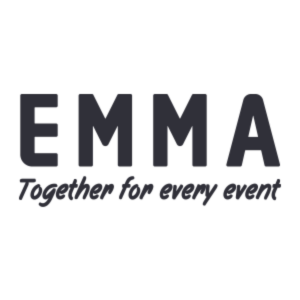Insights
INSIGHTS
All Topics
My Account
An A-Z glossary of fundraising terms and definitions
We have compiled an extensive glossary of all phrases and terminology related to fundraising, digital fundraising, legacy fundraising, and much more
There are so many forms of fundraising, so many associated terms. Individual giving differs from major gifts, corporate sponsorship is not quite the same as in-kind sponsorship, crowdfunding differs from peer-to-peer fundraising, legacy giving varies from in-memorial giving.
There are different forms and methods of fundraising, different theories and techniques, different fundraising tech that charities use, and so much more. Terms are often used interchangeably. Terms are often used incorrectly. So, we thought it might be helpful to provide clear and concise definition.
Below is our fundraising glossary, from A-Z, with easy navigation so you can find all the terms you need.
Skip to relevant letter:
A – B – C – D – E – F – G – H – I – J – K – L – M – N – O – P – Q – R – S – T – U – V – W – X – Y – Z
A
Acknowledgement: The formal recognition and gratitude expressed to donors for their contributions.
Annual fund: A fundraising campaign conducted by non-profit organisations to raise money for their operational expenses and ongoing programs throughout the year.
Annual report: Also known as an impact report, the annual report is produced by non-profits at the end of each fiscal year, highlighting their achievements, financial status, and impact, often used to communicate with stakeholders. For more, check out: Six impact reports to inspire you.
Appeal: A targeted fundraising effort aimed at soliciting donations from specific individuals or groups, often conducted through direct mail, email, or social media.
Ask: The act of requesting a donation from a prospective donor.
Auction: A fundraising event where goods or services are sold to the highest bidder, with proceeds going towards the organisation’s fundraising goals. For more, see: The best online auction platforms.
B
Bequest: A donation made through a will or trust to non-profits or charities, typically received after the donor’s passing. For more, check out Giving What You Can: Bequests: Your effective legacy
Beneficiary: An individual or organisation designated to receive the benefits of fundraising.
Board giving: Donations made by members of a non-profit organisation’s board to support the organisation’s mission and fundraising efforts.
Break-even point: The point at which a fundraising event or campaign has raised enough funds to cover its expenses, resulting in neither profit nor loss.
Brick campaign: A fundraising campaign where donors purchase engraved bricks or tiles that are used to construct a permanent installation or pathway to commemorate support. For more information, check out: How to Run a Great Brick Fundraising Campaign.
Bridge funding: Also known as bridge financing, it provides support to non-profit organisations to bridge the gap between funding sources or during times of financial instability.
C
Certificate of authority: Shows that a fundraiser is legitimately volunteering or working for a particular charitable institution.
Challenge grant: A donation that is contingent upon the recipient organisation raising a matching amount of money from other donors within a specified time frame.
Collecting box: A container for cash and other contributions.
Community fundraising: Fundraising activities organised and conducted by members of a community to support local non-profit organisations or causes, often through events, sponsorships, and donations. For more information, check out: The benefits of community fundraising.
Corporate sponsorship: Financial support provided by businesses or corporations to non-profit organisations or events in exchange for marketing opportunities and brand exposure. Check out: How to engage corporate partners.
Crowdfunding: A method that involves raising small amounts of money from a large number of people, typically through online platforms or social media, to support a specific project or cause.
D
Development plan: A roadmap outlining objectives and tactics for fundraising activities and resource development initiatives to support a non-profit organisation’s mission and financial sustainability.
Direct mail: A fundraising technique that involves sending printed materials, such as letters, brochures, or postcards, directly to potential donors through the postal service to solicit donations.
Donation: A gift of money or other property voluntarily given and accepted without expecting or receiving something in return.
Donation matching: A donor or organisation pledges to match donations made up to a certain amount or within a specific time frame, encouraging increased giving from supporters.
Donation receipt: A formal acknowledgment provided to donors for contributions, typically including details such as the amount, date, and tax-deductible status, used for tax purposes and donor records.
Donor acquisition: Attracting and recruiting new donors to support a non-profit organisation’s fundraising efforts through various channels, such as events, direct mail, and online campaigns.
Donor retention: The practice of maintaining and strengthening relationships with existing donors to encourage continued support and loyalty to a non-profit organisation over time. For more information, check out: How to motivate your lapsed donor.
E
Electronic funds transfer (EFT): Transferring funds electronically between bank accounts, often used for processing donations made to non-profits online or through automated bank transfers. For more information, check out the Forbes article: What Is An EFT Payment?
Email Campaign: A campaign conducted through email marketing, where non-profits send targeted emails to donors and supporters to solicit donations, share updates, and engage with the audience. For more information, check out: The ultimate guide to email marketing
Employee giving program: A workplace-based fundraising initiative where employees can donate to non-profit organisations through payroll deductions, matching gifts, or volunteer hours.
Endowment: Funds or assets invested by a non-profit organisation to generate income in perpetuity, with the earnings used to support the organisation’s programs and operations.
Enveloping: A fundraising technique where non-profit organisations include pre-addressed return envelopes with their direct mail appeals to make it easier for donors to send in their contributions. Christian Aid provide a useful article on how enveloping works.
Estate planning: The process of making arrangements for the distribution of assets and property after death, often including charitable bequests and planned gifts to support non-profit organisations.
Event fundraising: Activities organised around specific events, such as galas, walks, runs, or auctions, to raise money and awareness for cause. Check out: How to throw a fundraising event.
Event sponsorship: Financial support provided by businesses or individuals to sponsor non-profit events, programs, or initiatives in exchange for promotional opportunities and brand exposure.
F
Foundation grant: Financial support provided to non-profit organisations by private or community foundations through grants or awards to fund specific programs, projects, or initiatives.
Fund allocation: The process of distributing and allocating funds raised through fundraising activities to specific programs, projects, or operational expenses of a non-profit organisation. For more info, check out: How to track, allocate, and report funding.
Fund balance: The amount of funds or resources available to a non-profit organisation after deducting expenses and liabilities from its total assets, often used to assess financial health and sustainability. Check out the following article for more on funding: The step-by-step guide to a charity budget
Fund disbursement: The transfer or distribution of funds from a charity organisation to its beneficiaries, grantees, or vendors for the purposes of program implementation, grants, or expenses.
Fundraiser: An event, campaign, or activity organised by a non-profit organisation to raise funds, awareness, or support for its cause or programs. For some inspiration for throwing your own fundraiser, check out our article: 50 of the best fundraising ideas for charity.
Fundraising: The process of soliciting and collecting donations, gifts, or contributions from individuals, businesses, or foundations to support the mission and activities of a non-profit organisation.
Fundraising event: An organised gathering or activity designed to raise funds for a non-profit organisation, such as a gala, auction, concert, or charity walk/run.
G
Gift Aid: A tax incentive scheme in the UK that allows eligible charities to reclaim basic rate tax on donations made by individuals, increasing the value of the donation at no extra cost to the donor. For more information, check out: What is Gift Aid and how does it work?
Gift-in-kind: Non-cash donations of goods, services, or property, such as equipment, supplies, or pro bono professional services, used to support the organisation’s mission and activities.
Giving Tuesday: A global day of charitable giving and generosity celebrated on the Tuesday following Thanksgiving, intended to kick off the giving season and encourage donations to charities. For more, check out our podcast: Getting to grips with Giving Tuesday. Alternatively, take a look at some of the other awareness days on the calendar to get your charity ready for fundraising.
Grant proposal: A formal written request submitted by a non-profit organisation to a foundation, government agency, or other funding source, outlining a specific project or program in need of financial support.
Grant reporting: The process of providing progress updates, financial reports, and impact assessments to grantmakers or funding organisations as required by grant agreements.
Grantmaker: An entity that provides funding and support to non-profit organisations through grants, awards, or donations to address specific social, environmental, or community needs.
Grant writing: Preparing, writing, and submitting grant proposals to funders, including researching funding opportunities, crafting persuasive narratives, and compiling supporting documents. Catalyst share a very good article on the process: How to get ready to apply for digital grant funding
Grassroots fundraising: Fundraising organised y individuals or small groups within a community or organisation, often through grassroots campaigns, events, or peer-to-peer fundraising initiatives.
H
Hard ask: A solicitation or request for a donation made by a fundraiser or non-profit representative to a potential donor, often involving specific donation amounts, funding needs, or campaign objectives.
Hybrid event: A fundraising event that combines elements of in-person and virtual participation, allowing attendees to participate either in person or remotely via online platforms or livestreaming.
I
Individual giving: The act of donating to non-profit organisations or charitable causes by individual donors, often through one-time donations, recurring gifts, or planned giving arrangements.
In-kind donation: Non-monetary contributions made to a non-profit organisation in the form of goods, services, or property, rather than cash, used to support the organisation’s mission and programs.
Income stream: A source of revenue for a charities, such as donations, grants, program fees, merchandise sales, or investment income, used to support its operations and activities. For information on diversifying revenue, check out: Charities need to focus on income diversity.
J
Joint fundraising: Collaborative fundraising efforts between two or more charities or charitable causes to pool resources, share costs, and maximise the impact of fundraising activities and campaigns.
Junior board: A volunteer advisory or leadership group composed of young professionals, students, or emerging leaders who support a non-profit organisation’s mission and fundraising efforts through networking, advocacy, and event planning.
JustGiving: An online fundraising platform that allows you to create campaigns, collect donations, and engage supporters through personalised fundraising pages, events, and social media integration. For more online fundraising platforms, check out: The best online fundraising platforms for charities.
K
Keep in touch (KIT): A communication strategy implemented by charities to maintain contact and engagement through regular updates, newsletters, and acknowledgments.
Kick-off event: A launch event marking the beginning of a fundraising campaign, initiative, or season, often featuring special activities, announcements, and promotions to generate engagement.
Kickstarter: A popular crowdfunding platform that allows individuals, startups, and creative projects to raise funds from a large number of people (crowd) for their initiatives, products, or ventures.
L
Lapsed donor: A donor who has previously contributed to a non-profit organisation but has not made a donation within a specified period, typically defined by the organisation’s fundraising strategy or donor retention policies. For more, check out: How to motivate your lapsed donors.
Legacy giving: Donations or bequests made by individuals through their wills, trusts, estates, or other planned giving arrangements to support charities after their lifetime. For more information, check out: Why charities should focus on legacy giving.
Letter of thanks: A formal written expression of gratitude and appreciation sent by a non-profit organisation to donors, supporters, or volunteers to acknowledge their contributions, generosity, or participation in fundraising activities or events.
Lifetime value (LTV): The total financial contribution of a donor over the course of the donor’s lifetime, including all past and future donations, engagement activities, and potential bequests.
Livestream fundraiser: A virtual fundraising event or campaign conducted via live streaming platforms, such as Twitch, YouTube, or Facebook Live, where hosts engage with viewers, share stories, and solicit donations in real-time to support charitable causes or non-profit organisations.
Local fundraising: Fundraising efforts and campaigns conducted at the community or grassroots level by non-profit organisations to raise funds from local residents, businesses, or organisations to support local causes, projects, or initiatives.
Lobbying: Advocacy efforts undertaken by non-profit organisations to influence public policy, legislation, or regulations in support of their mission, goals, or constituents’ interests, often through direct communication with policymakers, grassroots campaigns, or coalition building.
Loyalty programme: A donor stewardship initiative or rewards system implemented by non-profit organisations to recognise, reward, and retain loyal donors who contribute regularly, demonstrate commitment, or reach certain giving milestones through exclusive benefits, privileges, or recognition.
M
Mail appeal: A fundraising campaign or solicitation effort conducted through traditional mail channels, such as direct mail letters, postcards, or newsletters, to reach donors and supporters and request donations for a non-profit cause or organisation.
Major gifts:
Major gifts officer: A fundraising professional responsible for identifying, cultivating, and soliciting major donors capable of making significant financial contributions to a non-profit organisation.
Matching gift program: A corporate initiative where employers match employees’ contributions to eligible charities, effectively doubling or multiplying the impact of employee donations.
Memorial fund: A designated fund or campaign established by a non-profit organisation or individuals to honour the memory of a loved one, friend, or community member through charitable donations, contributions, or fundraising activities. Check out: How To Start A Memorial Fund.
Microfinance: A financial services approach that provides small loans, credit, or financial assistance to low-income individuals, entrepreneurs, or small businesses in developing countries or underserved communities to promote economic empowerment, self-sufficiency, and poverty alleviation.
N
Needs-based fundraising: A fundraising approach focused on addressing specific needs, priorities, or challenges identified by a charity or community, often through targeted appeals, campaigns, or initiatives to raise funds for critical programs or services.
Network fundraising: A fundraising strategy that leverages personal and professional networks, connections, and relationships to solicit donations, engage supporters, and expand the reach and impact of fundraising efforts through peer-to-peer outreach and networking.
Non-cash donation: A donation of tangible or intangible assets, goods, or services made by individuals, corporations, or organisations to a non-profit organisation, including stocks, real estate, vehicles, equipment, and professional services, instead of monetary funds.
Nominal donation: A small or token contribution made by an individual or donor to a non-profit organisation or charitable cause, often representing a symbolic gesture of support or participation in fundraising activities or campaigns.
O
One-time donation: A one-off contribution made by a donor to a non-profit organisation or charitable cause, typically not recurring or part of a regular giving schedule or commitment.
Online fundraising platform: A digital platform that facilitates fundraising activities, donation processing, and donor engagement for non-profit organisations, providing tools, features, and functionalities for creating campaigns, collecting donations, and tracking progress. Check out: The best online fundraising platforms for charities
Online giving: The process of making charitable donations or contributions to non-profit organisations through internet-based platforms, websites, or donation portals, allowing donors to support causes, campaigns, or projects remotely using electronic payment methods.
Outreach campaign: A promotional effort or initiative undertaken by a non-profit organisation to raise awareness, engage stakeholders, and attract supporters through various communication channels, including social media, email marketing, events, and community outreach activities.
P
Payroll giving: A way of giving money to charity without paying tax on it. It must be paid through PAYE from someone’s wages or pension. Check out: See: All you need to know about Payroll Giving.
Peer-to-peer Fundraising: A fundraising strategy where supporters or individuals create personal fundraising pages and solicit donations from their networks of friends, family, and colleagues on behalf of a non-profit organisation or cause.
Pledge drive: A fundraising campaign or initiative where donors commit to making future donations or pledges to support a non-profit organisation or cause over a specified period, often through regular instalments or recurring contributions.
Planned giving: Donations made by individuals through wills, bequests, trusts, or other estate planning vehicles to support non-profit organisations or charitable causes after their lifetime.
Prospect Research: The process of identifying, researching, and analysing potential donors, supporters, or funding sources to assess their capacity, interest, and propensity to give to a non-profit organisation or cause.
Q
Quick response (QR) code: A two-dimensional barcode that can be scanned by smartphones or mobile devices to access websites, donation forms, or fundraising pages, enabling convenient and efficient giving opportunities for donors and supporters. See: How charities can use QR codes for fundraising.
R
Recognition programme: A system or framework implemented by a non-profit organisation to acknowledge and honour donors, supporters, volunteers, or partners for their contributions, commitment, and impact on the organisation’s mission and programs.
Reciprocity: The principle or practice of mutual exchange and benefit between a non-profit organisation and its donors, supporters, or stakeholders, where donors receive recognition, rewards, or benefits in return for their contributions or support.
Recurring donation: A regular or ongoing contribution made by a donor to a non-profit organisation on a scheduled basis, typically monthly, quarterly, or annually, providing consistent and sustainable funding for the organisation’s programs and initiatives.
S
Social media fundraising: The use of social media platforms, such as Facebook, X, Instagram, and LinkedIn, to promote fundraising campaigns, engage supporters, and solicit donations for non-profit organisations or charitable causes. Check out: The top social media trends for 2024.
Sponsorship: A financial or in-kind contribution to support non-profit organisations, events, programs, or initiatives in exchange for recognition, branding opportunities, or other benefits.
Stewardship: Cultivating and maintaining relationships with donors, supporters, and stakeholders by demonstrating appreciation, transparency, and accountability for contributions and impact on the non-profit organisation’s mission and programs. See: Why stewardship is so important.
Stock donation: A charitable contribution made by individuals or corporations through the donation of publicly traded stocks, securities, or other investments to non-profit organisations, providing tax benefits and potential capital gains savings for the donor.
Storytelling: The art of conveying narratives, anecdotes, or personal experiences that illustrate the impact, importance, and value of a non-profit organisation’s mission, programs, or beneficiaries to engage donors, supporters, and stakeholders emotionally and inspire action. Check out: Charities mastering the art of storytelling.
T
Target audience: The specific group or demographic of individuals, donors, or supporters that a non-profit organisation aims to reach, engage, or solicit for fundraising purposes through targeted marketing, communications, and outreach strategies.
Tax deduction: A reduction in taxable income that individuals or businesses may claim for charitable contributions made to qualified non-profit organisations, as allowed by tax laws and regulations.
Thank you letter: A formal letter or communication sent by a non-profit organisation to acknowledge and express gratitude to donors, supporters, volunteers, or partners for their contributions, support, or participation in fundraising activities.
Third-party fundraiser: An individual, group, or organisation that hosts or organises fundraising events, campaigns, or initiatives on behalf of a non-profit organisation to raise funds and awareness for a specific cause or charity.
Tribute giving: A type of charitable donation made in honour or memory of someone, where individuals or donors contribute funds to a non-profit organisation or cause to commemorate a special occasion, milestone, or the life of a loved one.
U
Underwriting: Financial support provided by individuals, businesses, or foundations to cover the costs associated with organising or hosting fundraising events, programs, or initiatives, such as sponsorship of event expenses or production costs.
Unrestricted funds: Donations or contributions made to a non-profit organisation without specific restrictions or conditions on how the funds should be used, providing flexibility for the organisation to allocate the money where it is needed most. See: The benefits of unrestricted funding.
Urgent appeal: A time-sensitive fundraising campaign or communication initiated by a non-profit organisation to urgently request donations, support, or assistance from donors, supporters, or the public in response to a critical or emergency situation or need.
Utility grant: Financial assistance or funding provided by utility companies or service providers to non-profit organisations or charitable causes to support community development projects, energy efficiency initiatives, or environmental conservation efforts.
V
Volunteer fundraiser: An individual or group who organises and executes fundraising activities on behalf of a non-profit organisation or charitable cause, contributing their time, effort, and expertise to solicit donations, plan events, or engage supporters.
W
Website donation button: A feature or tool integrated into a non-profit organisation’s website that allows visitors to make online donations securely and conveniently by clicking on a designated donation button or link, directing them to a donation form or payment portal.
X
Xmas fundraiser: A holiday-themed fundraising campaign or event organised around Christmas to raise funds for non-profit organisations or charitable causes. See: The best Christmas fundraising ideas.
Y
Youth Fundraiser: A fundraising initiative organised and led by young people or youth groups to raise funds for a specific cause or charitable project, promoting youth engagement and philanthropy.
Z
Zero-cost fundraising: A fundraising approach where charities raise funds without incurring any direct expenses or costs, relying on volunteer efforts, donated resources, and low-cost fundraising methods.
More on this topic
06 Feb 2025by Laura Stanley
Webinar: From legacy to leading – How to switch to a new finance system stress-free
Recommended Products
Recommended Products
Related Videos
07 Feb 2025by Josie Sparling
How charity leaders can help end digital exclusion
06 Feb 2025by Laura Stanley
Webinar: From legacy to leading – How to switch to a new finance system stress-free
Our Events
Charity Digital Academy
Our courses aim, in just three hours, to enhance soft skills and hard skills, boost your knowledge of finance and artificial intelligence, and supercharge your digital capabilities. Check out some of the incredible options by clicking here.





















